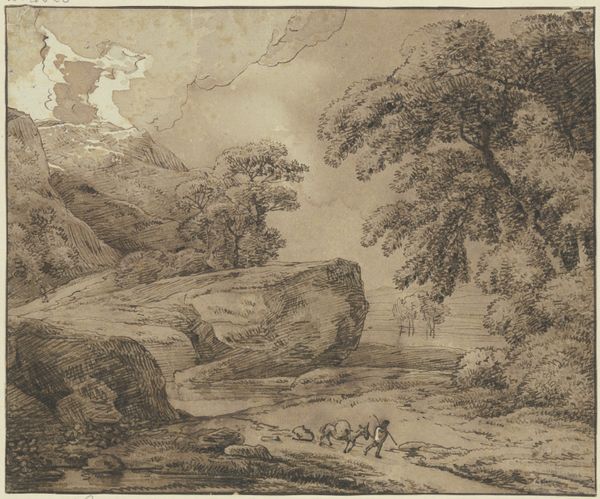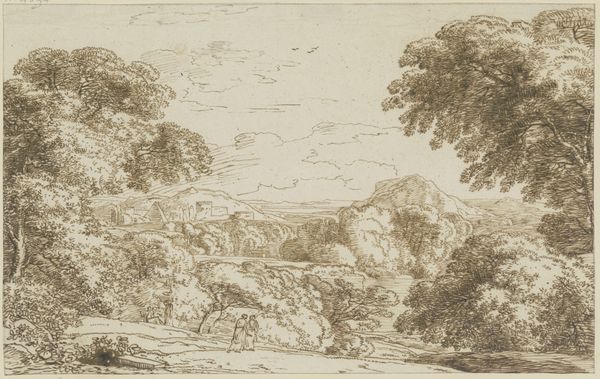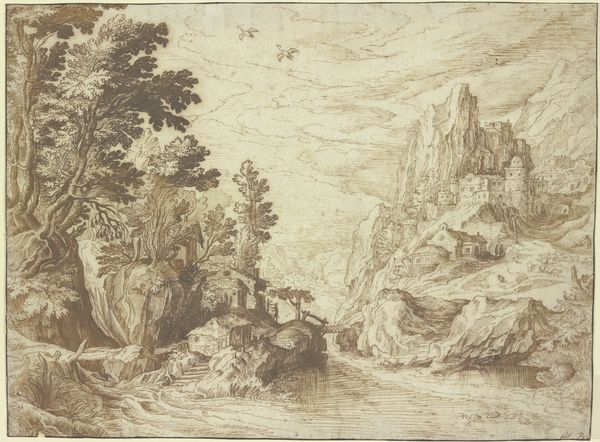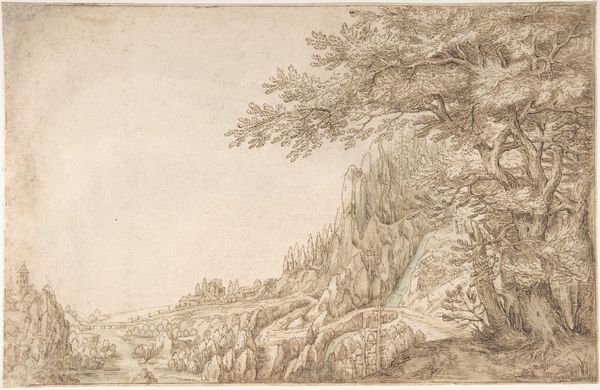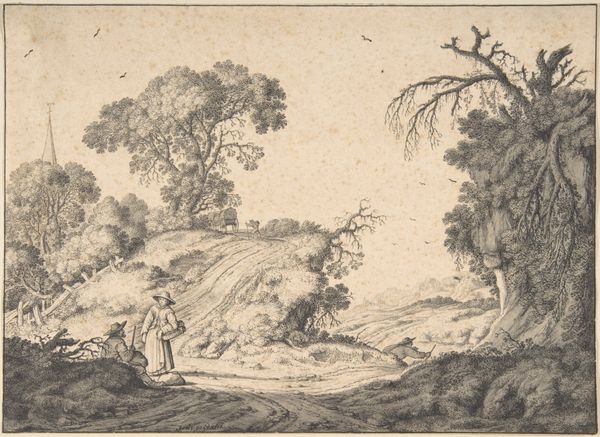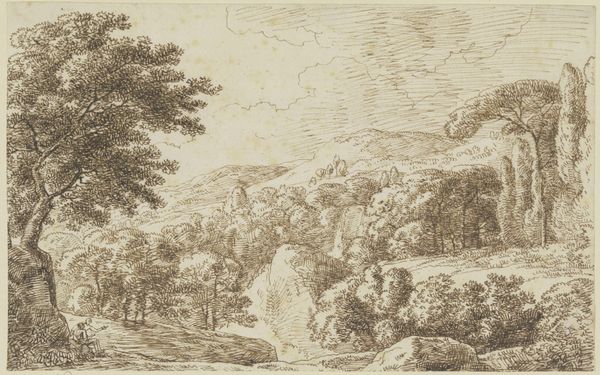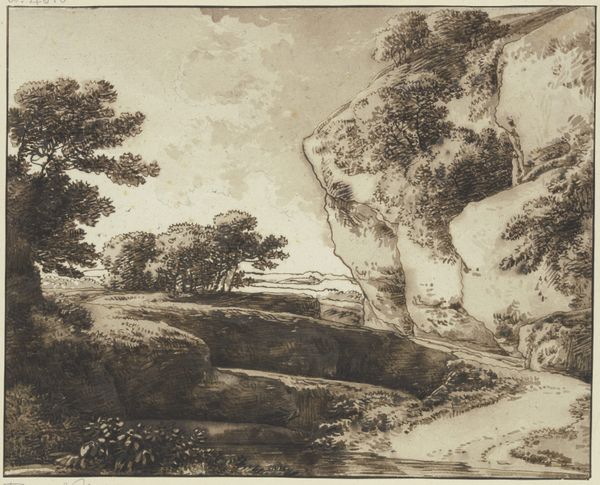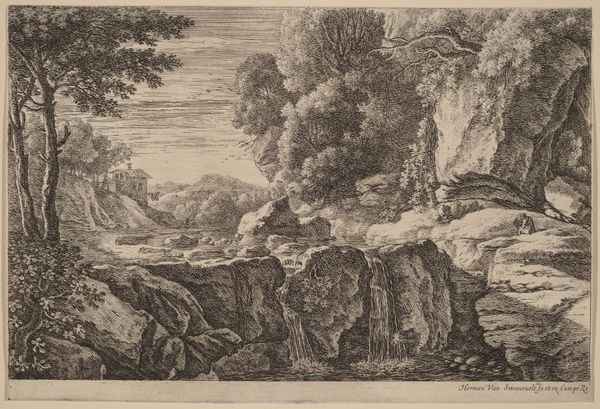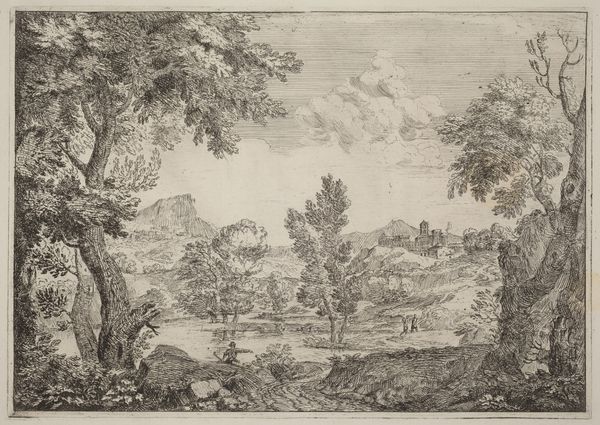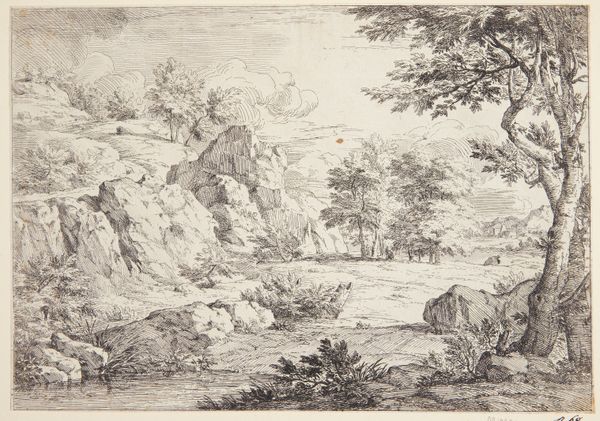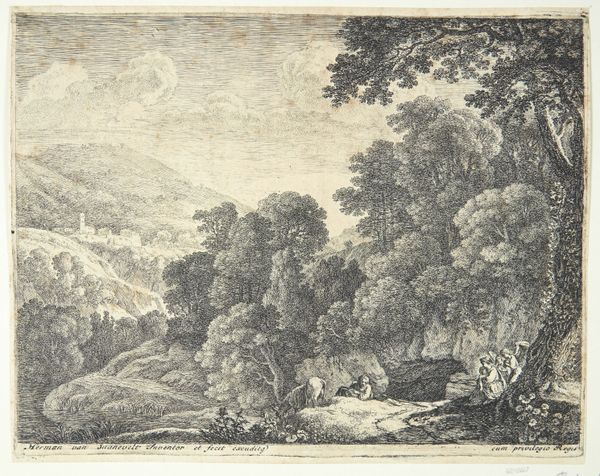
drawing, print, etching, ink, pen
#
drawing
#
toned paper
#
ink painting
# print
#
etching
#
landscape
#
romanesque
#
ink
#
pen
Dimensions: sheet: 8 11/16 x 14 1/4 in. (22.1 x 36.2 cm)
Copyright: Public Domain
Curator: I find this "Classical Landscape with Figures" truly evocative. It comes to us from the hand of Franz Kobell, dating roughly from 1749 to 1822. It’s a fascinating mix of pen, ink, and etching on what appears to be toned paper. Editor: My first impression? Tranquil, but with an underlying tension. The brown ink gives it an antique, almost sepia-toned feel, and the stark contrast creates a very theatrical light. Curator: Absolutely, a controlled theater of light. The landscape genre, particularly through the Romanesque lens Kobell employs, often symbolized a golden age, a retreat from the complexities of society. Do you find that resonates here? Editor: Definitely. I’m struck by the figures scattered across the landscape – almost like set pieces. On one cliff there is a figure near a herd of what looks like goats, with what appear to be seated people to the left, creating these little isolated pockets of activity that heighten the sense of curated isolation. This isn't just a pretty scene; there’s almost an emotional commentary embedded in the chosen imagery. Curator: Precisely. It invokes an Arcadia, but it is carefully designed for symbolic effect. Note how he utilizes ink to carve forms out of light and shadow. In psychological terms, the strategic placement of figures creates visual pathways, inviting the viewer to explore different narratives, contemplate varied meanings. The symbolic significance is in that journey of understanding. Editor: And, politically speaking, romanticized landscapes like this often functioned as idealized reflections on governance, almost suggesting the qualities one might desire in a society by the depiction of what could be imagined. They also reinforce a kind of land ownership through their creation and collection, no? Curator: Without question, such romantic depictions of the landscape served multiple social functions from demonstrating dominion over territory to promoting social values. That constant dialectic is very compelling, how an artistic artifact interacts and mirrors culture at large. Editor: Yes, absolutely. Thinking about Kobell's work, it definitely leaves one contemplating how the cultural memory and power structures intertwine through art. It’s this historical undercurrent that keeps me coming back. Curator: For me, its about understanding the landscape of the soul. The interplay of light and shadow, nature and human presence, all work to evoke emotions and states of mind that are as enduring as the earth itself.
Comments
No comments
Be the first to comment and join the conversation on the ultimate creative platform.
